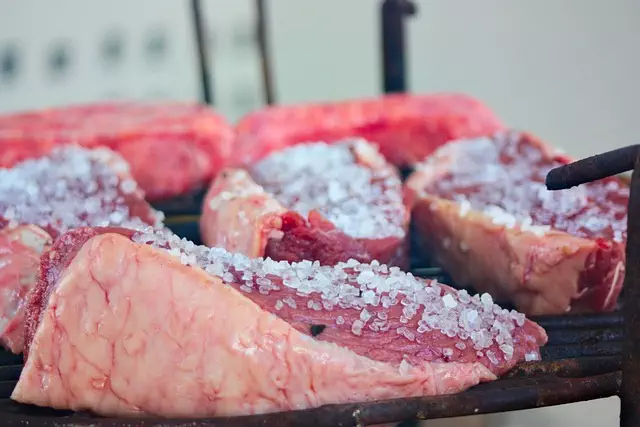As of 2023, Kratom's legal status in California is characterized by a complex and varied regulatory framework that differs across local jurisdictions. At the federal level, Kratom lacks clear classification under the Controlled Substances Act, leaving its legal standing ambiguous. In California, this has resulted in a mosaic of regulations with some cities and counties imposing bans or restrictions on Kratom sales and consumption, while others permit its use. This inconsistency necessitates vigilant monitoring of legislative actions at both state and local levels for updates on kratom legal status in California. The popularity of Malaysian Kratom buds in the state, known for their unique alkaloid profile, has contributed to a flourishing market, despite the legal gray area at the state level. This has led to a thriving scene with botanical shops and online vendors catering to consumer demand. Sustainable cultivation of Kratom in California's Mediterranean-like climate adheres to organic farming practices, ensuring ecological preservation and compliance with state regulations. The kratom legal framework in California thus supports responsible agricultural practices, setting a standard for sustainable botanical cultivation within the horticultural industry.
Exploring the nuanced legal landscape surrounding kratom in California, our article delves into the current status of kratom, particularly focusing on the Malaysian variety. Despite its controversial standing, kratom legal Californian markets thrive, reflecting a complex interplay between supply, demand, and regulation. We investigate the sustainable cultivation practices in California that contribute to the high-quality Malaysian Kratom buds now sought after by botanical enthusiasts. Join us as we navigate this intriguing plant’s journey from Southeast Asia to the Golden State’s diverse marketplace.
- Exploring the Legal Status of Kratom in California: A Comprehensive Overview
- The Thriving Market for Malaysian Kratom Buds in California's Botanical Landscape
- Cultivation and Harvesting of Malaysian Kratom: Insights into Sustainable Practices in California
Exploring the Legal Status of Kratom in California: A Comprehensive Overview

In the United States, the regulatory landscape of Kratom has been a subject of ongoing debate and legislative action. As of the knowledge cutoff in 2023, the legal status of Kratom in California has been a point of contention, with various cities and counties adopting differing stances. While the federal government has not provided definitive guidelines on Kratom, classifying it under the Controlled Substances Act as a Schedule I drug requires further legislative action. In California, local jurisdictions have taken both proactive and reactive approaches to regulating Kratom. Some municipalities have enacted ordinances that restrict or prohibit the sale and consumption of Kratom within their borders, citing concerns over public health and safety. Conversely, other regions have embraced a more lenient approach, allowing Kratom to be sold without restriction. This patchwork of regulations has led to confusion among consumers and vendors alike. It is crucial for anyone interested in the legal status of Kratom in California to stay informed about the evolving laws at both state and local levels, as they can vary significantly from one area to another. Keeping abreast of legislative changes is essential, as advocacy groups and policy makers continue to influence and reshape the future of Kratom legality within the state’s diverse legal environment.
The Thriving Market for Malaysian Kratom Buds in California's Botanical Landscape

Malaysian Kratom buds have found a receptive and thriving market within California’s diverse botanical landscape, where the plant’s popularity continues to grow. The demand for this Mitragyna speciosa variety is attributed to its unique alkaloid profile, which many enthusiasts believe offers distinct effects compared to Kratom from other regions. In California, where the legality of Kratom has been a topic of debate and legislative attention, the herb exists in a gray area, with counties and municipalities often adopting their own regulations. This legal status, under the purview of the California State government which has not explicitly outlawed Kratom at the state level, has led to a flourishing of botanical shops and online vendors catering to a wide base of consumers interested in the plant’s potential benefits. The ease of access, coupled with the state’s robust infrastructure for the distribution and sale of herbal supplements, makes California an ideal market for Malaysian Kratom buds, reflecting the dynamic interplay between regional demand and regulatory frameworks. As such, the botanical landscape of California continues to embrace this exotic botanical import, with consumers often seeking out strains from Malaysia for their purported qualities and effects.
Cultivation and Harvesting of Malaysian Kratom: Insights into Sustainable Practices in California

Malaysian Kratom, a plant whose leaves contain alkaloids with various effects, has garnered attention in California, where its cultivation and harvesting are governed by the kratom legal framework established within the state. Sustainable practices in the cultivation of Malaysian Kratom in California are not only crucial for maintaining the health of the ecosystem but also for ensuring a consistent supply of this botanical product. The climate in California, with its Mediterranean-like conditions, offers an ideal environment for the growth of these trees. Farmers adhering to sustainable methods use organic fertilizers and avoid harmful pesticides that could contaminate the soil and groundwater. These practices not only protect the local biodiversity but also align with the ethical and legal standards set forth by kratom legal California regulations.
The harvesting of Malaysian Kratom in California follows a meticulous process that respects the plant’s natural lifecycle. Harvesters time their cuts to coincide with the peak alkaloid concentration, ensuring that the product retains its potency and efficacy. The leaves are then dried using solar-powered dryers, further emphasizing the commitment to sustainable energy practices. This approach not only preserves the quality of the kratom but also minimizes the environmental footprint. The kratom legal status in California allows for such sustainable cultivation practices to be implemented and maintained, setting a precedent for responsible botanical agriculture within the state’s horticultural industry.
In recent times, the interest in Malaysian Kratom buds has surged within California’s botanical community, with its legal status and sustainable cultivation practices drawing considerable attention. The intricate tapestry of regulations governing kratom in California, particularly under the purview of ‘kratom legal california’, has been thoroughly examined, providing clarity for enthusiasts and traders alike. As the market thrives, it’s evident that the careful stewardship of these plants aligns with California’s ethos of ecological harmony and sustainability. The insights into the cultivation and harvesting processes in Malaysia underscore the importance of responsible sourcing to preserve the integrity of this unique botanical offering. As such, the future of Malaysian Kratom within California’s diverse botanical landscape appears promising, with a continued focus on legal clarity and sustainable practices ensuring its availability for years to come.






